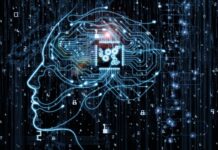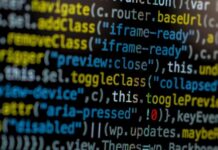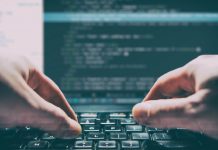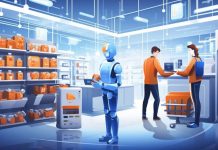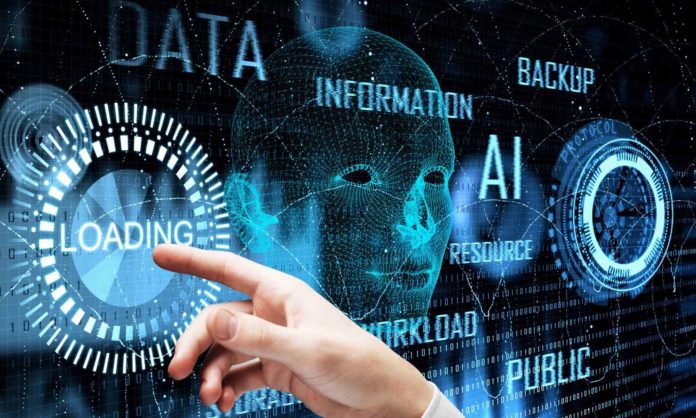
Artificial intelligence is amongst one of the most rapidly advancing fields of technology due to its potential in bringing betterment to the world.
However, as much as its advancement is greeted warmly, there are still few who remain skeptical about using AI, precisely so with AI in cybersecurity.
With the recent alarming increase in cyber threats and exploits, people all around the globe are desperately scrambling to take cover. Amidst this, AI within cybersecurity seems to offer great initiative. However, as its true potential is still not fully uncovered, anxiety over the use of AI in cybersecurity even goes around high.
To fully get a grasp of whether AI within cybersecurity is a risk or relief, it is better to have an outlook at both the aspects and select the side with greener grass.
Positive sides to AI
AI is now quite ubiquitous in our lives primarily as it comes froth with quite several vital advantages, which have led to various industries such as Apple and Gmail relying upon it.
In terms of cybersecurity, its outlook seems good enough to ponder over. Here are some of the key ways through which AI can be a valuable part of cybersecurity:
Protect against new threats
AI is marveled over its capability of thinking and adapting on a larger scale than that of the human mind. Now, as cyber-attacks are getting more sophisticated with each passing day, AI’s ability to learn and adapt can come in handy.
Primarily as it can be programmed to stay updated on any new cyber attacks automatically, which is indeed achievable by looking closely into attempted, blocked, or failed attacks. Through, this AI can then learn more deeply about an attack and come up with various fruitful ways of defending against it in the near future.
Moreover, AI can be put to use at having a better understanding of cyber attacks and various other vulnerabilities that are present online. Therefore, this learning method can be used to create cybersecurity tools that are better featured at protecting against cyber risks online.
Additionally, AI is designed to have a better understanding of a system. A program dedicated to improving security will allow it to understand bugs or any new abnormalities present within a system. With that, AI can also provide an efficient response method.
Efficient threat analysis within networks
With technology at its peak, companies and organizations now are connected through an intricate web of networking. A large number of investments are made to carry out such complicated forms of networking.
This perplexed network requires extensive security measures to manage all communications, along with transaction policies efficiently. Therefore, even a minor bug or error in the system could account for a loss of those significant investments, not to mention a possible stain over reputation.
Using AI within the system helps eradicate these issues as it can be trained to monitor every incoming and outgoing transactions. With close monitoring, identification of threats, or suspicious activities even at a vast plain of networking can be efficient. And with that, in case of alarming situations, immediate action can save trouble.
Better malware detection
Malware is quite easily one of the most common types of cyber threats. With it being an umbrella term for everything or anything that is specifically designed to harm a system, there is a broad category of malware present online.
Albeit malware detection has long been an ongoing process through the, what it may seem now traditional method of matching a suspect code to the signature-based system.
However, AI has now evolved to bring forth an even more efficient interference method of malware detection. As AI systems are capable of large scale data analysis, it makes it suitable for detecting malware files even before they start infecting the system.
Along with that, AI can also identify the type of malware present, making the response method even more efficient. Additionally, malware continues to evolve at a fast rate creating branches, namely malvertising, ransomware, etc. AI can quite capability grow and develop at an equal pace ensuring security online.
The darker side of AI
Although AI seems to be the best thing that has ever happened to us, however, raised voices pointing to its darker aspects are not something to overlook. While we harness AI’s capabilities to create a strong front, it can topple over against us, causing harm rather than cybersecurity. As AI’s leading working lies on an efficient ability to learn and adapt, it is quite natural for hackers and other cybercriminals to work ways in cycling that capability in security breaches.
Such that, as AI can better learn and adapt to create defenses against network breaches and hack attacks, it can also determine the working of a tool and crack it down. Also, with AI-based defense systems in use, exploiting a system can become easier for hackers. The maximum work they would have to go through is to set up a system to work at cracking codes.
Additionally, as malware security systems are now created through AI, those who put their minds, or it can also generate stronger malware and viruses using AI. Moreover, not to mention those hacking and malware tools available on the dark web. How long till they don’t get AI-based and start wreaking havoc?
Now, let’s consider this scenario: AI and certain machine learning algorithms work by training vast datasets to learn how to respond to different realtime circumstances. They learn by doing and incorporating additional data, iteratively refining their approaches. However, from a security viewpoint, this presents two significant challenges.
First of all, most AI systems are designed to make deductions and decisions autonomously without frequent human involvement. These unguided systems can be compromised, and their flows can go undetected for a long time, only to cause severe consequences in the outcome in unexpected ways. Second, the reasons why AI and machine learning programs make deductions and decisions might not be obvious to engineers from the underlying decision making models or data. They might be not necessarily transparent or quickly interpretable. Even if a violation in an AI system is detected, its purpose could remain opaque.
Although cybersecurity is a concern for pioneers in AI, cybersecurity is of less concern to companies that are lagging. When these companies connect more and more AI systems to control physical systems, the risk of severe consequences rises, presenting an array of potential vulnerabilities from their AI initiatives. At this point, no industry is immune, and this presents increased risks such as:
- AI bias
- Financial fraud
- Discriminations by brands and governments
- Safety hazards by cyber-physical devices that control traffic flow, medical devices, recommendation systems, train routing, or dam overflow, etc.
- Misalignment between our goals and the machine’s
- Invasion of privacy and social grading
- Social manipulation
- National threats by autonomous weapons
Final words
Where AI within cybersecurity is a risk or not is an ongoing debate that seems to have no fruitful outcome. Specifically, its advantages and disadvantages are something that relies solely upon its use. As everything has its pros and cons, judging it upon mere assumptions, it is a hard task to follow through. But considering human-made tools and defense systems seem to have desperately failing us, it is about time to equip ourselves with smarter defense initiatives such as AI.
Confronting AI risks: Recommendations
As per the outlooks of AI in cybersecurity, its risks posing a substantial threat, having AI, and then failing miserably at controlling is a hot potato we are not yet ready to handle! However, in response to the changing threats, we would like some high-level recommendations:
- Develop policies to assure that the development of AI will be directed at augmenting humans and the common good. Policymakers must collaborate with technical researchers to investigate, prevent, and mitigate potential malicious uses of AI.
- Shift the priorities of economic, political, and education systems to empower individuals to stay ahead in the race with the robots.
- Learn from and with the AI and cybersecurity community. We should explore and potentially implement formal verification and responsible disclosure of AI vulnerabilities, security tools, and secure hardware. Best practices should be identified for addressing dual-use concerns, such as computer security, and imported where applicable to the case of AI.
- Improve human collaboration across borders and stakeholder groups. Researchers should consider the dual-use nature of their work seriously and proactively reach out to relevant actors when harmful applications are foreseeable.
- Promote a culture of responsibility. Organizations that employ AI applications are in a unique position that shapes the security landscape of the AI-enabled world. They should realize their ethical commitment in the best use of technology and the responsibility to assure a better future for the coming generations.
About the author: Rebecca James is a cybersecurity journalist, creative team leader, and editor at PrivacyCrypts.


